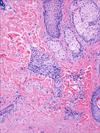Vascularized composite tissue allotransplantation--state of the art
- PMID: 23581799
- PMCID: PMC3724233
- DOI: 10.1111/ctr.12117
Vascularized composite tissue allotransplantation--state of the art
Abstract
Vascularized composite tissue allotransplantation is a viable treatment option for injuries and defects that involve multiple layers of functional tissue. In the past 15 yr, more than 150 vascularized composite allotransplantation (VCA) surgeries have been reported for various anatomic locations including - but not limited to - trachea, larynx, abdominal wall, face, and upper and lower extremities. VCA can achieve a level of esthetic and functional restoration that is currently unattainable using conventional reconstructive techniques. Although the risks of lifelong immunosuppression continue to be an important factor when evaluating the benefits of VCA, reported short- and long-term outcomes have been excellent, thus far. Acute rejections are common in the early post-operative period, and immunosuppression-related side effects have been manageable. A multidisciplinary approach to the management of VCA has proven successful. Reports of long-term graft losses have been rare, while several factors may play a role in the pathophysiology of chronic graft deterioration in VCA. Alternative approaches to immunosuppression such as cellular therapies and immunomodulation hold promise, although their role is so far not defined. Experimental protocols for VCA are currently being explored. Moving forward, it will be exciting to see whether VCA-specific aspects of allorecognition and immune responses will be able to help facilitate tolerance induction.
© 2013 John Wiley & Sons A/S.
Figures


References
-
- Tobin GR, Breidenbach WC, 3rd, Ildstad ST, Marvin MM, Buell JF, Ravindra KV. The history of human composite tissue allotransplantation. Transplant Proc. 2009;41(2):466–471. Epub 2009/03/31. - PubMed
-
- Harrison JH, Merrill JP, Murray JE. Renal homotransplantation in identical twins. Surg Forum. 1956;6:432–436. Epub 1956/01/01. - PubMed
Publication types
MeSH terms
Grants and funding
LinkOut - more resources
Full Text Sources
Other Literature Sources
Miscellaneous

